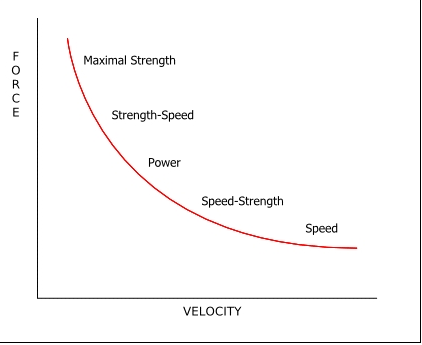In one corner we have the evidence based coach who won’t let his or her client/athlete perform anything without a PubMed reference in hand. And at the other corner we have the coach who relies on anecdotal experience and feels just because it worked for his or her’s clients/athletes that it must apply to everyone else.
It’s a never ending battle of back and forth shenanigans, name calling, and vitriol similar to the exploits of the Jedi vs. the Sith or the Autobots vs. the Decepticons.
Who’s right vs. who’s wrong? Who’s good vs. who’s bad?
I for one feel the best approach is one that adopts both sides. I see value in both…each having it’s own unique set of advantages and disadvantages.
Put another way: in terms of figuring out the “best” approach to anything (as it relates to getting people bigger, faster, stronger, and harder to kill) my thoughts mirror that of the Godfather of behavioral economics, Richard Thaler:
“I try out lots of ideas, get quick feedback, and learn in the best possible way: theory-driven intuition tested by trial and error.”
That’s about as fair and charitable of a statement as I can muster on the topic.
Which brings me to an email I received this past weekend from a young, up-and-coming fitness professional:
“I recently started an S&C internship at a D1 school (won’t give the name). I want to go into college S&C so I figured this was a great opportunity to learn from the “best.”
However I have been following you, Cressey, Boyle, and Somerset for a couple of years now and I love how you are pushing the field forward.
I mentioned to the strength coaches I follow you guys and they rolled their eyes at me and said “why would you follow random dudes and not read publications and research.”
I bit my tongue and stayed quiet because I’m an intern, but what I really wanted to do was punch a wall. I believe you all stay ahead of the game and you have inspired me and taught me so much. I would love your thoughts on college S&C and the mindset of the coaches I’m learning under now.”

My initial reaction.
I find this unfortunate to say the least. Not that I have to sit here and defend my honor (and that of my colleagues) – I believe our collective body of work speaks for itself – but I’m going to do just that. Only for a minute. Promise.
In terms of myself and Eric Cressey (and Pete Dupuis): we’ve grown a business that started in 2007 in a 2200 square foot space we rented inside an indoor batting facility training mostly local high-school athletes, to a now 15,000 square foot space training professional baseball players from every level from every affiliated MLB team, not to mention athletes and general fitness clients from all over the US and world.
I’d like to think that we’ve done so via an equal parts evidence based approach and anecdotal. And bicep curls.
Do I really need to defend Mike Boyle? Come on!
And as far as (Dean) Somerset is concerned: the guy is one of the smartest guys I know who can regurgitate studies by memory and who’s built one of the best reputations in the industry for being able to “dumb down” research into more bite sized information bons-bons that guys like myself can understand. That, and he has build a very successful fitness business training thousands of people in the past few years.
In short: even though guys like myself, Eric, Dean, Boyle, and a vast array of others are writing for various websites and our own blogs (how dare we!), we do in fact, actually coach people. In real life.
So, in many ways, we’re doing “research” on a daily basis, finding out what works and what doesn’t, and learning to assimilate the information we come across as it best applies to our athletes/clients.
Ol’ Boys Club
Giving credit where it’s due: I applaud the young coach who sent the email for keeping his mouth shut. The last thing he or she wants to happen is to yap away at their superiors and come across as some know-it-all entitled hipster after having coached for all of eleven seconds.
If you’re in someone’s “house” as a guest, you respect their rules and their way of doing things.
I don’t know what Division I program he’s referring to, but we have to understand that some (not all) strength and conditioning coaches at that level have one hand tied behind their back as far as how much “freedom” they have outside of the program itself.
As my colleague, Jim Laird, pointed out:
“I think much of that attitude stems from jealousy. Many college coaches just do not have time to do stuff online or not allowed to. They see private sector coaches doing stuff online getting recognition and it steals their thunder and authority.”
While I agree, I do feel it’s a minority mindset. A shitty mindset, mind you…but a minority one. As an example, I’m good friends with the entire staff at Boston University Strength & Conditioning and they couldn’t be a more open-minded staff willing to try new things and listen to what others have to say.
They use research all the time. I’ve seen their programs and I’ve seen the books and journals on their desks. But I can’t tell you how many times I’ve walked in – I train there 1-2x per week – and one of the coaches will pull me aside to ask my opinion on something or ask me what blogs I’m reading lately. It’s refreshing to say the least.
They don’t (always) need a double blind study to do the thinking for them. There’s a zero ol’ boys vibe.
As strength coach, Henry Lau, notes:
“As a S&C coach, it’s not one’s job to “read” research, though more likely to assimilate methodologies to make better athletes. Why some coaches think it’s great to read journals and make up their own ideas from a limited view is intellectual dishonesty.”
And We’re Doing A lot of Assuming
I for one HATE reading research. This isn’t to say I discount it or that I don’t understand (and respect) its role in furthering our knowledge in the field. But am I wrong to state that research is designed to ask more questions, not to necessarily answer all of them?
What’s more, what many fail to realize – and guys like Brad Schoenfeld, Bret Contreras, Nick Tumminello, amongst others can attest to – is that research studies and books are often 2,3, sometimes 4 years behind the curve with regards to the information it’s relaying. By the time a study or book is released – years after the fact – the information is already outdated (or has been expounded on).
Nowadays blogs and websites are what people read to stay “up-to-date” and relevant.
Besides that, we’re assuming that most people can actually read the research, and more importantly…understand it. It’s not as easy as one may think. Reading research is every bit as much of a learned skill as riding a bike or writing computer code or pretending to listen to your wife when she’s updating you on her day when what you’re actually doing is repeating the lyrics from The Fresh Prince of Bel Air in your head.
Take for example the following random study I found on PubMed using the keyword “muscle hypertrophy:”
Translated into Tony speak that reads:
“Bloop, bleep, blop, bloopidy, blop, bleep, science.”
I admire anyone who can read something like that and be all like “yep, makes total sense, got it.” For me though: I’d make it through the first paragraph and probably black out and not remember a thing I just read.
I’ll read it, pick up a few things (maybe), but it’s really hard for me to digest most of it.
Plus, and this can’t be discounted: Research is great, but it’s practical application can be limited because things are controlled quite strictly for the research to be valid and effective. We don’t necessarily live in this “research bubble” where everything is hunky-dorey.
That, and many (not all) fitness-based studies involve untrained, fasted individuals, or worse, mice. Not exactly the most relevant and useful ball of information to correlate to a trained, presumably high-level population.
And at the end of the day what do most people use research for anyways? To answer questions, yes….but to also validate their own set of beliefs and biases. I mean, technically, you can find research to back anything up. We used to have research that stated smoking was good for us.
To Summarize
BOTH sides of the argument (it’s a stupid argument to have IMO) are important and have their role. By reading journals, articles, and research one will expand their own knowledge and hopefully develop critical analysis of research, methodology, and conclusions.
However it comes down to more than only book smarts. As strength coach, Kevin Shattock so astutely states:
“It’s only after the above is reached where one can understand HOW and IF the findings can be applied to their particular settings and environment. This is what the likes of Cressey, et al do well.
But by simply “following ” these guys on social media, you may gain (& often do) gain great insights, thoughts, ideas etc the intern, young S&C is missing a crucial part of the coaching journey, the WHY you do something, the understanding on a fundamental level.
Research is NOT everything, but it can be a great starting point to develop YOUR OWN ideas, thoughts, perspective and methods, just as careful observation of great practitioners can be.”
In the end: To be a great coach you cannot discount either approach. I’d argue that in order to truly grow as a fitness professional (and by extension to possibly innovate) you should use practice both.



 .
. Audiences around the world have seen Dr. Evan Osar’s dynamic and original presentations. His passion for improving human movement and helping fitness professionals think bigger about their role can be witnessed in his writing and experienced in every course he teaches.
Audiences around the world have seen Dr. Evan Osar’s dynamic and original presentations. His passion for improving human movement and helping fitness professionals think bigger about their role can be witnessed in his writing and experienced in every course he teaches.




 There are three main components when looking at when looking at improved intramuscular coordination:
There are three main components when looking at when looking at improved intramuscular coordination:


 get some work done.
get some work done. I think clients like the idea that they never know what they are going to get that day. It could be a ten exercise circuit, or four mini circuits of 3-4 exercises. It all depends on the cycle of the program that week.
I think clients like the idea that they never know what they are going to get that day. It could be a ten exercise circuit, or four mini circuits of 3-4 exercises. It all depends on the cycle of the program that week.

